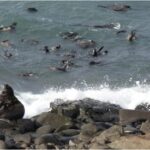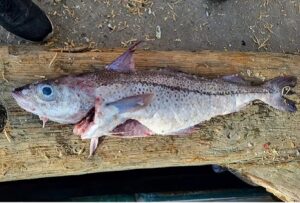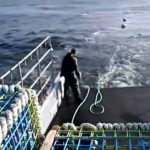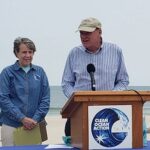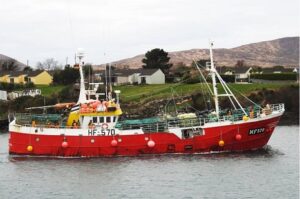Tag Archives: BOEM
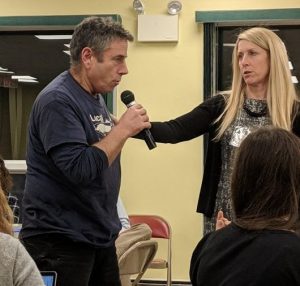
Commercial Fishermen, Sport fishers Divided on Plans for More Offshore Wind
Commercial fishermen say the wind-energy projects planned for southern New England, such as the South Fork Wind Farm, are the latest threats to their income after decades of quotas and regulations “I don’t like the idea of the ocean being taken away from me after I’ve thrown so many big-dollar fish back in the water for the last 30 years, praying I’d get it back in the end,” said Dave Aripotch, owner of a 75-foot trawl-fishing boat based in Montauk, N.Y. Dave Monti of the Rhode Island Saltwater Anglers Association said the submerged turbine foundations at the Block Island Wind Farm created artificial reefs, boosting fish populations and attracting charter boats like his. >click to read<10:07
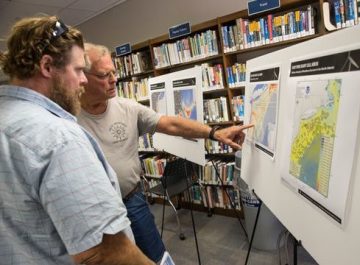
Offshore wind energy: fishermen ask for relief
Offshore windmills may be the future of energy here, but they’re presently a source of agitation to commercial fishermen. A vocal group of them, who aren’t necessarily opposed to windmills but just the placement of them on or near fishing grounds, which if you ask them is anywhere the water is salt, gave the Bureau of Ocean Energy Management their two cents at a public meeting Thursday. “All of these areas are prime scallop grounds. We’re not going to take any of this lying down,” said Arthur Osche, a member of the Point Pleasant Fishermen’s Dock Co-operative. Osche was referring to fishing grounds in Hudson North and Hudson South, two designated wind farm lease sites that start about 17 miles east of the coastline here. Fellow co-operative dock member Jim Lovgren said if their access to the grounds is restricted then they should be paid for the economic loss. “Mark off the area and then compensate us,” said Lovgren. >click to read<
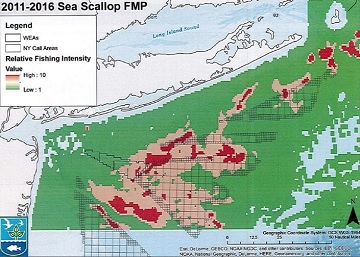
Long Island turbine siting – ‘You’re impacting the whole resource’
Fishermen and city officials raised the alarm Tuesday about potential wind turbines in prime fishing and scalloping grounds south of Long Island. About 55 people attended a meeting with the U.S. Bureau of Ocean Energy Management to discuss the agency’s evaluation of possible offshore wind locations within a 2,300-square-mile portion of the New York Bight, between Long Island and New Jersey. Scalloper Eric Hansen said 40 to 50 percent of the scalloping grounds fished by New Bedford scallopers is within the area the federal government is considering leasing to wind developers, and if fishing there becomes dangerous, people will fish harder in the remaining places. “You’re impacting the whole resource,” he said. >click to read<13:35
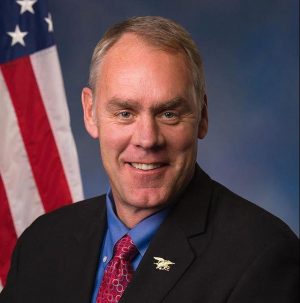
A profound threat to our fisheries, the ocean habitat, and our way of life. Please read and sign this important petition
Dear Secretary Zinke: We participate, either directly or indirectly, in a wide range of commercial fisheries in the New York-New Jersey Bight. The Bight is the geographic indentation along the Atlantic Coast extending northeasterly from Southern New Jersey to the eastern tip of Long Island. We write to express our concern and opposition to the proposed wind energy lease areas the Bureau of Ocean Energy Management (BOEM) has put out for “Call” in the New York-New Jersey Bight. We have appreciated your outreach to our industry over the past year, and hope we can continue a constructive dialogue. At the same time, we want to make sure you understand that the risks to our industry from poorly-planned offshore wind energy development are immense. If you were to draw a bulls-eye where our historic Mid-Atlantic fishing grounds are on a map, the bulls-eye would include the Hudson North and Hudson South Areas identified by the State of New York, and the Fairways North and Fairways South areas that BOEM unilaterally and subsequently added to the Call. This is a profound threat to our fisheries, the ocean habitat more generally, and our way of life. >click here to read and sign the petition<12:33
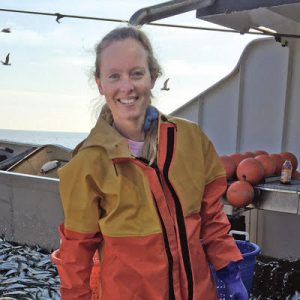
Why the fishing industry is against offshore wind farms near Ocean City
Representatives say wind farms could cause harm by driving marine wildlife away, disturbing the ocean environment and making navigation more difficult for fishers and mariners. “Now with the current offshore wind leasing process, we have these fishing grounds being sold right out from under us,” said Meghan Lapp during a recent presentation to the Ocean City Town Council. But marine biologists and wind farm officials say the impact won’t be that severe. “I think they took an emotional approach to the problem. … So there was some degree of misinformation,” said Salvo Vitale, general counsel for U.S. Wind, one of the offshore wind energy companies involved in the Maryland project. The town’s officials feel very strongly that this project was misrepresented to them because the size of the wind turbines has increased since the initial proposal,,, >click to read<10:18

Offshore Wind Projects’ Impact on Fishing Grounds off the Ocean City Coast Discussed
After hearing a strong presentation from a noted expert on the impacts of wind farms on commercial fishing, the Mayor and Council seem inclined to strengthen opposition to the wind farms off the resort coast in general.,, Monday’s presentation was spearheaded by Meghan Lapp, who is the fisheries liaison for Seafreeze Ltd., a Rhode Island-based company that is the largest producer of sea-frozen fish on the east coast. The highly-decorated Lapp also serves on numerous fishery management councils up and down the east coast including the mid-Atlantic region. Joining Lapp during Monday’s presentation to the Mayor and Council were a handful of local commercial fishermen, most of whom have been working the seas off the Ocean City coast for generations. >click to read<09:46
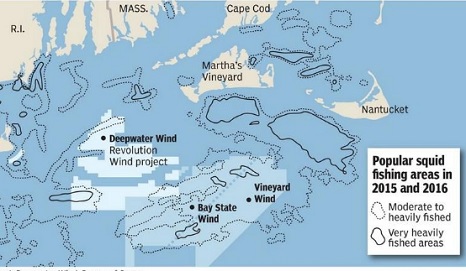
Now We’re Talking!! BOEM dressed down, wind farm companies get an earful at a meeting
Federal officials in charge of leasing ocean bottom land to offshore wind farm companies got an earful at a meeting with commercial fishermen Wednesday – and much of it was R-rated. There isn’t merely significant opposition to offshore wind farms; there is 100-percent agreement among the fishermen that the wind turbines will eventually put them out of business.,, Deepwater Wind, which has a project slated off the coast of Montauk called South Fork Wind and runs the Block Island Wind farm, was the subject of much of the ire and criticism,,, Ryan Fallon said he has spent his life on the water. “Everyone is against [the wind farms]. This is my life, my daughter’s life. I almost brought her here so you could look her in the eyes,” said Fallon, whose father was a commercial fisherman and bought him his first boat. “I’ve been doing this since I was 12. I’ll die before I let you take it away.” >click to read<20:37
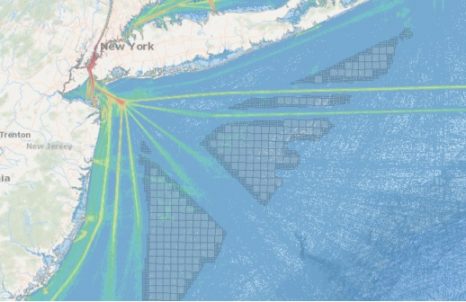
East End forum on potential offshore wind turbine sites turns tense
A public forum on potential offshore wind farm sites turned tense as East End commercial fishing representatives railed against the renewable energy source and its potential impact on their industry. The forum, held Wednesday at the Montauk Community Center, was dominated by commercial fishermen who largely said none of the proposed sites were fitting. “These should be removed off our fishing grounds completely,” said Bonnie Brady, executive director of the Long Island Commercial Fishing Association. Those who spoke declined to suggest the western sites as appropriate, saying they didn’t want to hurt colleagues’ livelihoods either. >click to read<13:56
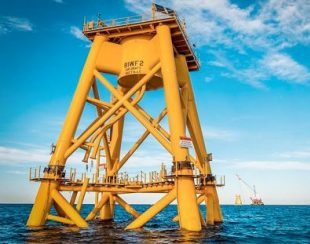
Offshore wind rush is irresponsible, Turbine farms threaten the future of fishing
In an April opinion piece, Interior Secretary Ryan Zinke wrote that “affordable, reliable, and abundant American energy drives domestic jobs and prosperity.” If by “drives domestic jobs and prosperity” Zinke meant “threatens the very existence of New England fishermen,” then the East Farm Commercial Fisheries Center of Rhode Island (which represents Rhode Island commercial fishermen) would agree.,,, The rush to approve and build these massive projects is irresponsible. The survival of the fishing industry is now dependent on a review process that has been kicked into high gear and is lacking the research and data necessary to make informed and balanced decisions. For example, in its haste to approve these massive projects, the Bureau of Ocean Energy Management significantly underestimated the intensity of the fishing effort taking place in the Vineyard Wind project area and seriously undervalued the fisheries, especially the squid fishery. As a result, Vineyard Wind plans to construct its project in a prime squid fishing area. >click to read<08:01
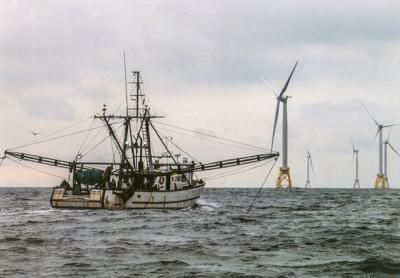
Washington must come to grips with offshore wind conflicts
Offshore wind energy developers have momentum building for them in East Coast waters. But other maritime industries want to ease up on the throttle. The federal Bureau of Ocean Energy Management recently held another round of public meetings in New Jersey and New York, gathering information for what could be a future round of lease offerings in the New York Bight. Secretary of Interior Ryan Zinke has promised to help fast track future permitting. .,,, Commercial fishermen have a case in federal court over the Statoil lease, and litigation seems certain to reignite. “We have the Magnuson Act (federal fisheries law) because we want to have American fishing grounds for American fishermen,” said Meghan Lapp, fisheries liaison for fishing company Seafreeze Ltd., North Kingstown, R.I. “BOEM is plowing ahead regardless. They have not slowed down.” >click to read<22:42
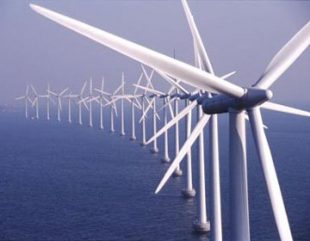
N.J. Governor asks feds for six-month extension to assess impact of offshore wind farms on state’s main fishing grounds
Gov. Phil Murphy is asking the federal government to extend the public comment period on proposed new lease sales for offshore wind in the New York Bight, a step that could delay the process for up to six months. In a letter to Ryan Zinke, Secretary of the Interior, the governor requested more time (180 days) because the areas in New York under consideration for wind-energy development include New Jersey’s main fishing grounds, including two that are closest to its coast. >click to read<08:44
Plans to line the shore of Rhode Island with wind turbines threaten fishermen livelihoods
When Greg Mataronas steams out of Narragansett Bay as early as 3 a.m., he is headed for grounds he knew as an eight-year-old.,, there is a new force threatening Mataronas’ ability to provide for his wife and children: offshore wind energy.,,, “All of our concerns fall on deaf ears,” Lapp said. “I personally have been meeting with BOEM for three years.” Lapp added that she gave “confidential business information” from over 20 fishing vessels to BOEM to demonstrate that there was heavy fishing activity on one particular lease site, but she said BOEM issued the lease regardless. >click to read<10:29
Fishermen air concerns about Vineyard Wind
Looking to create a sea change in energy production in Massachusetts, Governor Charlie Baker signed “An Act to Promote Energy Diversity” with overwhelming bipartisan support in 2016. A key provision of the legislation mandated that utilities solicit long-term contracts with offshore wind farm developers, with the goal of adding 1,600 megawatts of offshore wind power by 2027. Fast-forward to Tuesday night, at the Martha’s Vineyard Hebrew Center, where federal and state officials, along with representatives from Vineyard Wind, gathered for a “scoping session” to hear how Islanders feel about having the first large-scale offshore wind farm in the United States – 106 turbines, 700 feet tall, spaced about a mile apart, covering 167,000 acres>click to read<15:47
Fishermen fear fallout from proposed wind farm project
Comments surrounding Vineyard Wind’s offshore wind projects filled the Waypoint Convention Room on Monday night and they came from a diverse group ranging from climate change deniers to environmentalists. But the main discussion revolved around jobs. Fishermen strongly criticized the process with one saying he feared Europeans would commandeer all the jobs associated with offshore winds. >click to read<08:43
Series of Public Hearings on Offshore Wind Starts in New Bedford – >click to read<10:02
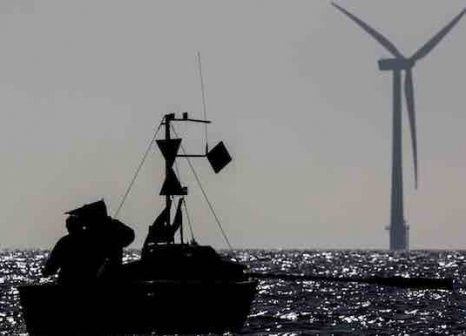
Offshore Wind States Beware
Off of the shore of Block Island on the Rhode Island coast, five wind turbines are operating and supplying power to the island. It took years of state and federal policymaking, environmental impact assessments, and town hall meetings for the 30-megawatt wind farm to come to fruition due to its cost and degradation of vistas. It cost $300 million—$10,000 per kilowatt—about 10 times more than the cost of a new natural gas combined cycle unit. Further, it is 55 percent more costly than what the Energy Information Administration (EIA) expects a first-of-a-kind offshore wind unit to cost—$6,454 per kilowatt. In terms of generation costs, EIA expects a new offshore wind farm to be 3 times more expensive than an onshore wind farm. And now, fishermen >click to read<08:16
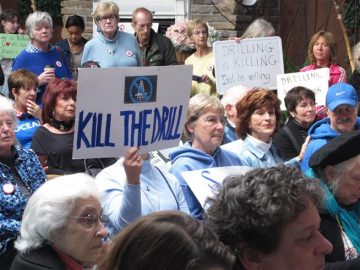
Offshore drilling foes, denied microphone, hold rallies
With giant inflatable whales, signs that read “Drilling Is Killing” and chants of “Where’s our meeting?” opponents of President Donald Trump’s plan to open most of the nation’s coastline to oil and natural gas drilling have staged boisterous rallies before public meetings held by the federal government on the topic. That’s because the public cannot speak to the assembled attendees at the meetings. The U.S. Bureau of Ocean Energy Management is meeting one on one with interested parties and allows people to comment online, including typing comments on laptops it provides. People also can hand bureau officials written comments to be included in the record. What they can’t do is get up at a microphone and address the room. >click to read< 08:29
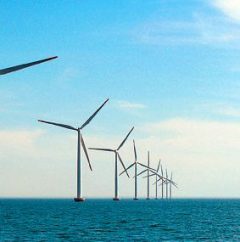
SMAST meeting brings fishing, offshore wind in the same room
Offshore wind developers spent the majority of a 3-hour meeting Monday attempting to win over the local commercial fishing industry. For much of he meeting, the fishermen in attendance rolled their eyes, scoffed at various PowerPoint slides and even went as far as to say offshore wind is unwanted. “Nobody wanted this,” one fisherman out of Point Judith said. “Nobody wanted problems. We are assured there would be none. And here we are.” Twenty members of the Fisheries Working Group on Offshore Wind Energy sat around a table at SMAST East hoping to solve various issues between the two ocean-based industries. >click to read< 18:09 
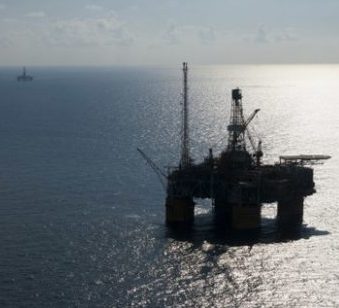
2019-2024 National Outer Continental Shelf Oil and Gas Leasing Program Public Meetings Scheduled Nationwide
Public meetings will take place across the country using an open-house format, so participants can arrive any time during the scheduled meeting time. At the meetings, participants can ask questions, share information, talk with our team members one-on-one, and learn more about the National OCS Program. We also encourage participants to submit written comments to inform BOEM of specific issues, impacting factors, environmental resources, alternatives to the proposed action, and mitigation measures to consider in its analyses. For those unable to attend one of the scheduled meetings, BOEM is offering a Virtual Meeting Room where participants can visit the same stations available at the open house meetings. There they are able to review and download the same handouts and posters offered at the meetings and provide comments. >click for times, dates, and locations<15:36
Industrializing the Ocean – Floating Wind Plan Could Finally Crack California’s Offshore Market
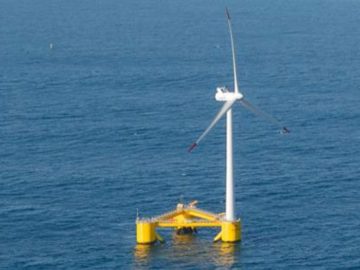 A Seattle startup has proposed what could be the world’s largest floating offshore wind farm on a site 33 miles northwest of Morro Bay, anchoring in place around 60 to 100 turbines capable of delivering as much as one gigawatt of electricity into California’s grid.,,, Morro Bay’s roughly 10,000 residents are also divided over the project, and not just because of worries about eyesores on the shoreline. The local commercial-fishing trade group, representing the town’s second-largest industry after tourism, has expressed concerns about losing its territory. click here to read the story 15:09
A Seattle startup has proposed what could be the world’s largest floating offshore wind farm on a site 33 miles northwest of Morro Bay, anchoring in place around 60 to 100 turbines capable of delivering as much as one gigawatt of electricity into California’s grid.,,, Morro Bay’s roughly 10,000 residents are also divided over the project, and not just because of worries about eyesores on the shoreline. The local commercial-fishing trade group, representing the town’s second-largest industry after tourism, has expressed concerns about losing its territory. click here to read the story 15:09
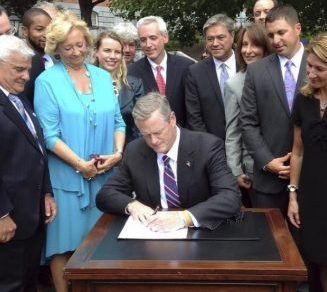
Not exactly a breeze: Offshore wind still faces challenges
Amid all of the challenges that could face offshore wind power along the East Coast — legal disputes from commercial fishing advocates, construction plans altered by whale migrations, President Donald Trump’s emphasis on revitalizing fossil fuels and more — some promising news for renewable industry supporters arrived in mid-March. That’s when a telling indication of how offshore wind power might fare under President Trump was delivered, after an uncertain, wait-and-see winter. Following months of silence about offshore wind, a statement by Secretary of the Interior Ryan Zinke gave an early glimpse of the administration’s tone. click here to read the story 09:22
BOEM: Offshore wind farms impact ‘small’ on fishing
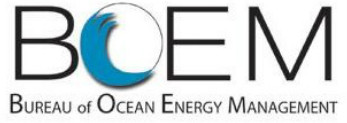 The development of offshore wind farms in the US Atlantic will have a minimal impact on commercial fishing, according to a new report from the Bureau of Ocean Energy Management (BOEM). The BOEM report – ‘Socio-Economic Impact of Outer Continental Shelf Wind Energy Development on Fisheries in the US Atlantic – has been produced in conjunction with the National Marine Fisheries Service to better understand fishing activity in areas of potential offshore wind development. The only impact will be on permitted vessels using pots and gillnets in Rhode Island and southern Massachusetts, which could result in losses of up to $517,000, it found. However, the impacts are not distributed evenly with 20 permits fishing out of Rhode Island ports of Narragansett and Newport and Massachusetts ports of New Bedford and Fairhaven affected the most. link 11:53
The development of offshore wind farms in the US Atlantic will have a minimal impact on commercial fishing, according to a new report from the Bureau of Ocean Energy Management (BOEM). The BOEM report – ‘Socio-Economic Impact of Outer Continental Shelf Wind Energy Development on Fisheries in the US Atlantic – has been produced in conjunction with the National Marine Fisheries Service to better understand fishing activity in areas of potential offshore wind development. The only impact will be on permitted vessels using pots and gillnets in Rhode Island and southern Massachusetts, which could result in losses of up to $517,000, it found. However, the impacts are not distributed evenly with 20 permits fishing out of Rhode Island ports of Narragansett and Newport and Massachusetts ports of New Bedford and Fairhaven affected the most. link 11:53
Fishing Industry Fights N.Y. Offshore Wind Area In Court
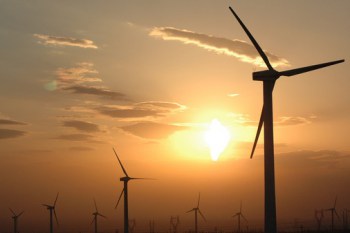 Lawyers representing a host of fishing communities, associations and businesses – led by scallop industry trade group the Fisheries Survival Fund – argued in U.S. District Court in Washington, D.C., yesterday against an offshore wind lease sale off the coast of Long Island, N.Y. A ruling is expected in the coming days, according to a press release from the Fisheries Survival Fund. The plaintiffs are seeking a preliminary injunction against the wind farm lease that the U.S. Bureau of Ocean Energy Management (BOEM) preliminarily awarded to Statoil for $42.5 million at an auction in December. They argued that the site of the project is in the middle of important fishing grounds, particularly for the scallop and squid fisheries. They also claimed that allowing the “unlawful” lease sale to go through would cause “irreparable harm to commercial fishermen.” Read the story here 07:31
Lawyers representing a host of fishing communities, associations and businesses – led by scallop industry trade group the Fisheries Survival Fund – argued in U.S. District Court in Washington, D.C., yesterday against an offshore wind lease sale off the coast of Long Island, N.Y. A ruling is expected in the coming days, according to a press release from the Fisheries Survival Fund. The plaintiffs are seeking a preliminary injunction against the wind farm lease that the U.S. Bureau of Ocean Energy Management (BOEM) preliminarily awarded to Statoil for $42.5 million at an auction in December. They argued that the site of the project is in the middle of important fishing grounds, particularly for the scallop and squid fisheries. They also claimed that allowing the “unlawful” lease sale to go through would cause “irreparable harm to commercial fishermen.” Read the story here 07:31






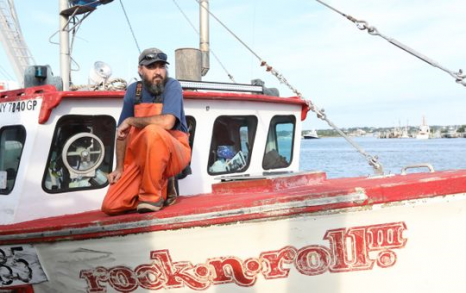
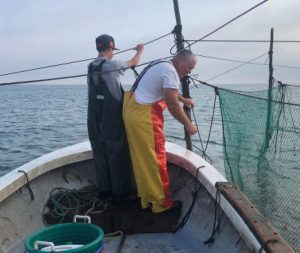
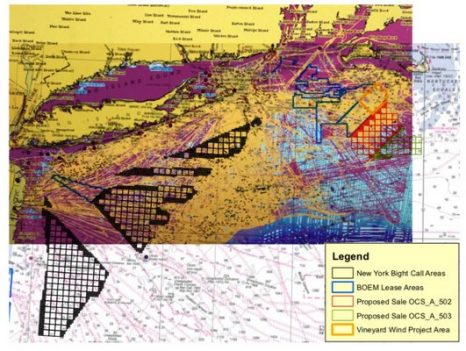
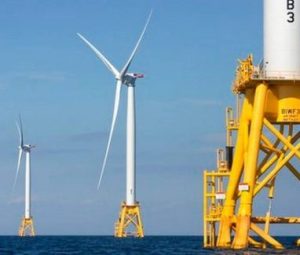
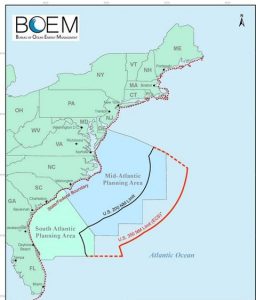

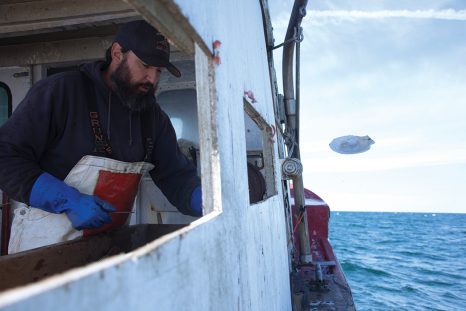
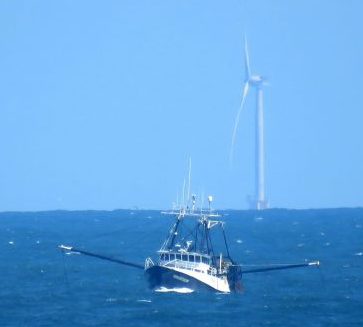
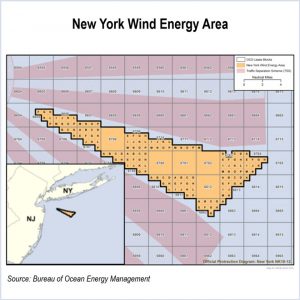 The U.S. District Court for the District of Columbia decided late Wednesday not to grant a preliminary injunction in the lawsuit brought by a host of fishing communities, associations and businesses led by scallop industry trade group the Fisheries Survival Fund against the impending leasing of the New York Wind Energy Area to Statoil Wind of Norway. The suit alleges the U.S. Bureau of Ocean Energy Management (BOEM) leasing process did not adequately consider the impact of wind power development in the waters off Long Island, New York on the region’s fishermen. The fishing industry asked that the court temporarily halt BOEM from proceeding with the final ratification of a lease on the area, which was preliminarily awarded to Statoil, Norway’s state oil company, for $42.5 million. “Getting a preliminary injunction granted is difficult, given the high standards that the court applies,” said Mayor Kirk Larson of Barnegat Light, N.J., one of the plaintiffs in the case. “But our case will continue, and we are confident that we will succeed on the merits.”
The U.S. District Court for the District of Columbia decided late Wednesday not to grant a preliminary injunction in the lawsuit brought by a host of fishing communities, associations and businesses led by scallop industry trade group the Fisheries Survival Fund against the impending leasing of the New York Wind Energy Area to Statoil Wind of Norway. The suit alleges the U.S. Bureau of Ocean Energy Management (BOEM) leasing process did not adequately consider the impact of wind power development in the waters off Long Island, New York on the region’s fishermen. The fishing industry asked that the court temporarily halt BOEM from proceeding with the final ratification of a lease on the area, which was preliminarily awarded to Statoil, Norway’s state oil company, for $42.5 million. “Getting a preliminary injunction granted is difficult, given the high standards that the court applies,” said Mayor Kirk Larson of Barnegat Light, N.J., one of the plaintiffs in the case. “But our case will continue, and we are confident that we will succeed on the merits.”


























